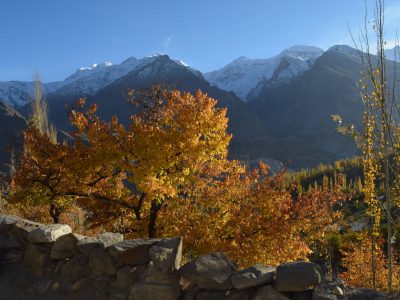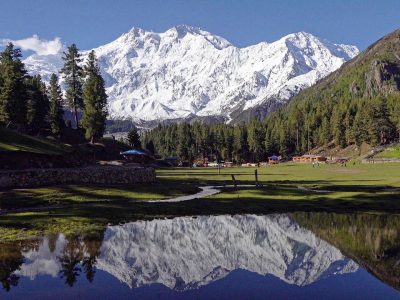Indus Valley
The Indus Valley civilization flourished around 2,500 B.C. in the western part of South Asia, in what today is Pakistan and western India. It is often referred to as Harappan Civilization after its first discovered city, Harappa.
The Indus Valley was home to the largest of the four ancient urban civilizations of Egypt, Mesopotamia, India and China. It was not discovered until the 1920's. Most of its ruins, including major cities, remain to be excavated. Its script has not been deciphered. Basic questions about the people who created this highly complex culture are unanswered.
The Harappans used the same size bricks and standard weights for a thousand miles. There were other highly developed cultures in the area. Some are thousands of years older. Harappa was settled before the Harappans of the Indus Valley, and they were replaced by other still anonymous peoples.
In fact, there seems to have been another large river which parallel and west of the Indus in the third and fourth millenium B.C. This was the ancient Ghaggra-Hakra River or Sarasvati of the Rig Veda. Its lost banks are slowly being laid out by researchers. Along its bed, a whole new set of ancient towns and cities have been discovered.
Ancient Mesopotamian texts speak of trading with at least two seafaring civilizations - Makkan and Meluha - in the neighborhood of India in the third millennium B.C. This trade was conducted with real financial sophistication in amounts that could involve tons of copper. The Mesopotamians speak of Meluha as an aquatic culture, where water and bathing played a central role. A number of Indus Valley objects have been found buried with Mesopotamians.
This doorway starts telling the story of the Indus Valley as a series of chapters. It follows the re-discovery of Harappa in the early 19th century by the explorers Charles Masson and Alexander Burnes, and the archaeologist Sir Alexander Cunningham in the 1870's. This work led to the the first excavations in the early 20th century at Harappa by Rai Bahadur Daya Ram Sahni, and by R.D. Banerji at another Indus Valley city, Mohenjo-daro.
Since 1986, the joint Pakistani American Harappa Archaeological Research Project (HARP) has been carrying out the first major excavations at the site in forty years. These excavations have the shown Harappa to have been far larger than once thought, perhaps supporting a population of 50,000 at certain periods. These excavations, which continue in 1998, are rewriting assumptions about the Indus Valley. New facts, objects and examples of writing are being discovered each season.
Itinerary
- Arrive Karachi
- Fly to Mohenjo Daro
- Drive Sukhar
- Drive to Bahawalpur
- Full day excursion to Derawar Fort
- Drive to Multan
- Full day at Multan
- Drive to Lahore via Harappa
- Full sightseeing Lahore
- Back to Airport
We are sorry, there are no reviews yet for this tour.













